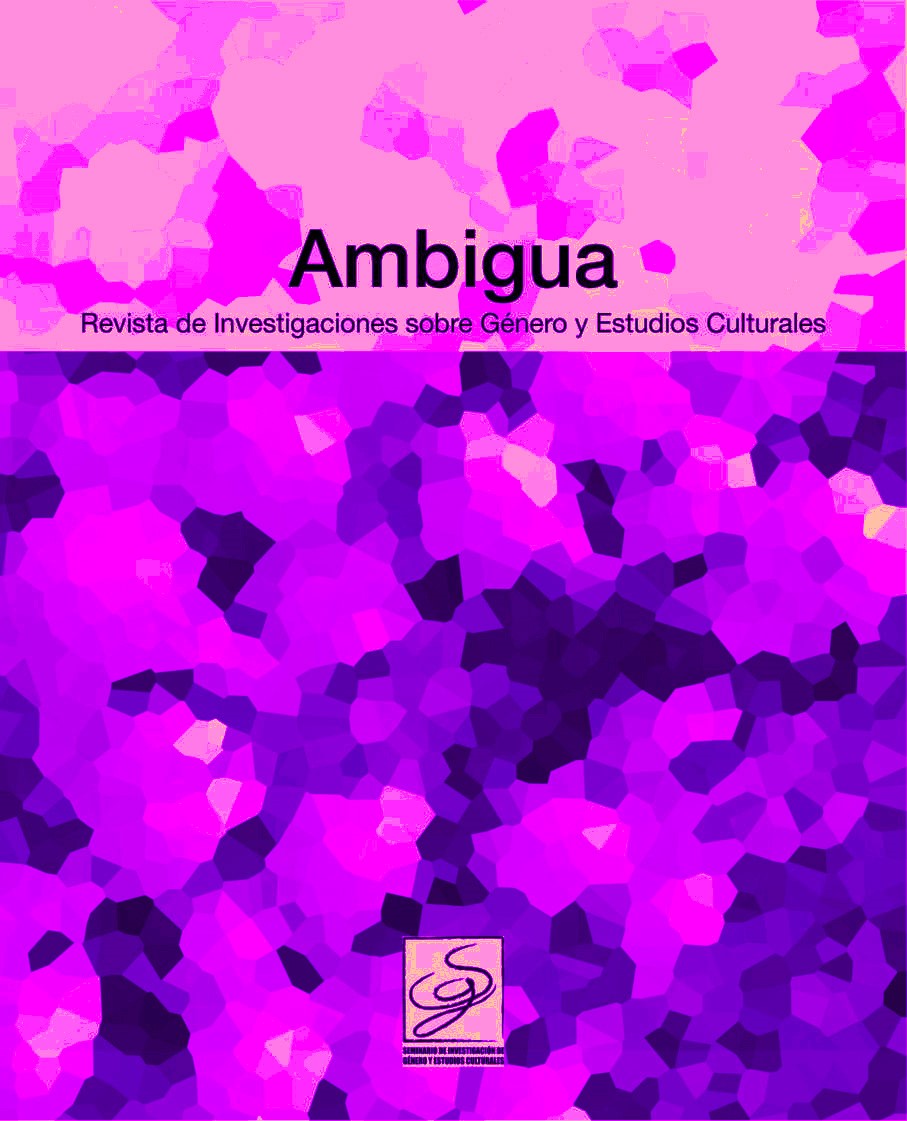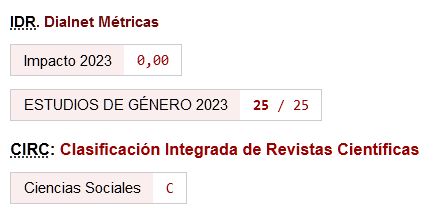Las medias rojas: sensibilización hacia la violencia machista en aulas de español en Albania.
DOI:
https://doi.org/10.46661/ambigua.10600Palabras clave:
Literatura, propuesta didáctica, español como lengua extranjera, Albania, mujeres autoras, violencia de géneroResumen
El presente artículo surge de la propia experiencia de la autora como profesora de español en un ambiente universitario en Tirana, en la República de Albania. El contacto directo con estudiantes jóvenes, mayormente mujeres, estudiantes de Filología Hispánica en la Universidad de Tirana, la capital, y el interés por conocer sus costumbres y tradiciones me llevó a realizar una propuesta didáctica basada en la conciencia de género dentro de la asignatura de Literatura Española. En primer lugar, este artículo da algunas pinceladas de la situación de violencia machista en Albania y del tipo de educación y alumnado que hay en la Universidad para entender el contexto donde se desarrolla la propuesta didáctica. Después, continuamos con la unidad que ofrece actividades de prelectura: una introducción a la vida y obra de Emilia Pardo Bazán y, la autora albanesa homóloga, Parashqevi Qiriazi y, por último, la lectura guiada sobre “Las medias rojas” de la autora española. Terminamos con actividades de poslectura basadas en la expresión escrita. La unidad no sólo trata el tema de la violencia contras las mujeres, sino que también pone de relieve y compara el trabajo literario de dos autoras de diferentes países con objetivos feministas comunes lo que resultó muy atractivo para el alumnado.
Descargas
Citas
"A la sombra de la pandemia, la violencia machista se dispara en Albania", Swissinfo, 29 de septiembre, 2020,
https://www.swissinfo.ch/spa/a-la-sombra-de-la-pandemia-la-violencia-machista-se-dispara-en-albania/46064808 [fecha de consulta 19/05/24]
"Ending violence against women and girls", ONU Mujeres en Albania, https://albania.unwomen.org/en/what-we-do/ending-violence-against-women-0 [fecha de consulta 19/05/24]
ACQUARONI, Rosana. Las palabras que no se lleva el viento: literatura y enseñanza de español como LE/L2. Universidad de Salamanca: Santillana, 2007.
ALBALADEJO GARCÍA, María Dolores. "Cómo llevar la literatura al aula de ELE: de la teoría a la práctica". MarcoELE, 5, 2007. Disponible en: https://marcoele.com/descargas/5/albaladejo-literaturaalaula.pdf [fecha de consulta 19/05/24]
BARTHES, Roland. El placer del texto. Siglo XXI: Madrid, 1972.
COLLIE, Joanne y SLATER Stephen. Literature in the Language Clasroom: A resource book of ideas and activities. Cambridge: Cambridge University Press, 1987.
CRESPO PICÓ, Mila. "El pretexto del texto. La comprensión lectora como proceso vehicular hacia otras destrezas", en Actas del Programa de Formación para Profesorado de Español como Lengua Extranjera. (Múnich: Instituto Cervantes, 2004-2005), 183-193.
DIBRA, Zenepe. "Sevasti and Parashqevi Qiriazi", en A Biographical Dictionary of Women's Movements and Feminisms, Central, Eastern, and South Eastern Europe, 19th and 20th Centuries, (CEU Press: Budapest, 2006), 454-459. https://doi.org/10.1515/9786155053726-115
ELSIE, Robert. The Albanian Bektashi. History and Culture of a Dervish Order in the Balkans, Bloomsbury Publishing: Londres, 2019. https://doi.org/10.5040/9781788315722
FREIRE LÓPEZ, Ana María. "Biografía de Emilia Pardo Bazán". Biblioteca Virtual Miguel de Cervantes. https://www.cervantesvirtual.com/portales/pardo_bazan/autora_biografia/ [fecha de consulta 19/05/24]
GJON MARKU, NDUE. Mirdita House of Gjomarku Kanun, Lulu, New York, 2016.
JURADO MORALES, José y ZAYAS MARTÍNEZ, Francisco. La literatura en la enseñanza del español como lengua extranjera: propuesta metodológica y aplicaciones didácticas de textos de la literatura española contemporánea, Universidad de Cádiz: Cádiz, 2002.
LERONES ROBLES, Paula. "Palabra e imagen: dos formas de actuación", Revista Clepsydra, 16 de noviembre, 2017, 169-190.
Making every woman and girl count mid-term review, Informe ONU, 2019, https://data.unwomen.org/sites/default/files/documents/Publications/AR2019Annex/Women-Count-Annual-Report-2019_WEB_FINAL.pdf [fecha de consulta 19/05/24]
NEGRETE, Carmela. "El 31% de las mujeres de Europa del Este han sufrido violencia machista en el último año", El Salto, 12 de marzo, 2019, https://www.elsaltodiario.com/violencia-machista/informe-osce-feminicidios-europa-este [fecha de consulta 19/05/24]
OCASAR, Jose Luis. "Literatura en la enseñanza de segundas lenguas", en Boletín de la Asociación para la enseñanza del español como lengua extranjera, nº 28, Mayo, 2003, 17 - 34.
PARDO BAZÁN, Emilia. "Las medias rojas", Cuentos de la tierra, Biblioteca Virtual Cervantes, 1914. Disponible en: https://www.cervantesvirtual.com/obra-visor/cuentos-de-la-tierra--0/html/dcb42d82-2dc6-11e2-b417-000475f5bda5_2.html#I_0_ [fecha de consulta 19/05/24]
SAEZ, Begoña. "Texto y Literatura en la enseñanza de ELE", en Del texto a la lengua: la aplicación de los textos a la enseñanza-aprendizaje del español L2-LE, Francisco Javier de Santiago-Guervós (ed. lit.), Jorge Juan Sánchez Iglesias (ed. lit.), Marta Seseña Gómez (ed. lit.), Hanne Bongaerts (ed. lit.), Vol. 1, (AESELE: Salamanca, 2010), 57-66.
SANZ PASTOR, Marta. "El lugar de la literatura en la enseñanza del español: perspectivas y propuestas", s.f. Disponible en: cvc.cervantes.es/lengua/anuario/anuario_06-07/pdf/ele_01.pdf [fecha de consulta 19/05/24]
VV. AA., Arberia- Sefarad: en el espejo del otro. Las relaciones entre Skanderbeg y la Corona de Aragón y las experiencias paralelas de los Sefardíes y los Arberesh, Agencia Española de Cooperación Internacional para el Desarrollo: Madrid, 2009.
Well-being and Safety of Women, Informe OSCE, 6 de marzo, 2019, https://www.osce.org/secretariat/413237 [fecha de consulta 19/05/24]
Descargas
Publicado
Cómo citar
Número
Sección
Licencia
Derechos de autor 2024 PAULA LERONES ROBLES

Esta obra está bajo una licencia internacional Creative Commons Atribución-NoComercial-CompartirIgual 4.0.
Las autorías que publican en esta revista están de acuerdo con los siguientes términos:
- Los autores conservan los derechos de autor y garantizan a la revista el derecho de ser la primera publicación del trabajo al igual que licenciado bajo Licencia Creative Commons Atribución-NoComercial-CompartirIgual 4.0 Internacional la publicación inicial en esta revista: Attribution-NonCommercial-ShareAlike 4.0 International (CC BY-NC-SA 4.0)
- Las autorías pueden establecer por separado acuerdos adicionales para la distribución no exclusiva de la versión de la obra publicada en la revista (por ejemplo, situarlo en un repositorio institucional o publicarlo en un libro), con un reconocimiento de su publicación inicial en esta revista.
- Se permite y se anima a las autorías a difundir sus trabajos electrónicamente (por ejemplo, en repositorios institucionales o en su propio sitio web) antes y durante el proceso de envío, ya que puede dar lugar a intercambios productivos, así como a una citación más temprana y mayor de los trabajos publicados (Véase The Effect of Open Access) (en inglés).
- Esta revista no cobra por publicar, es decir, no tiene APC's (the journal does not have article processing charges)
- Esta revista tampoco cobra ninguna tasa por el envío/presentación de trabajos (the journal does not have article submission charges)









